Public affairs: Freshwater fishing FAQ by Mattison Holland
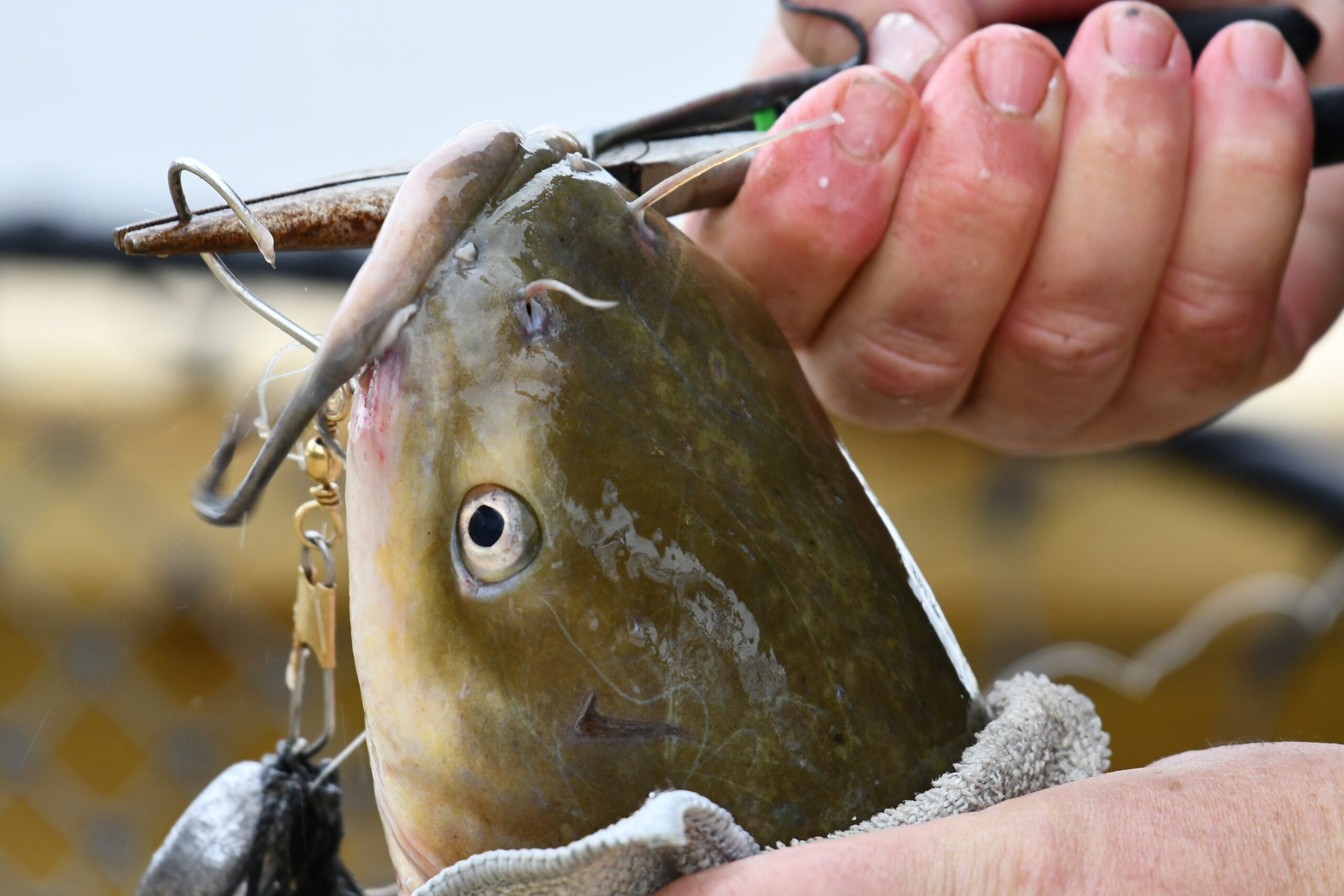
[adning id=”33097″]
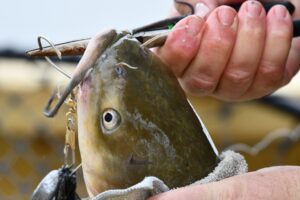 Nothing beats the breezy spring weather like freshwater fishing in East Texas. Thankfully, this season offers an abundance of opportunities for catching all sorts of fish. Freshwater fishing is a good time for family and friends to get outside and enjoy spending time with one another.
Nothing beats the breezy spring weather like freshwater fishing in East Texas. Thankfully, this season offers an abundance of opportunities for catching all sorts of fish. Freshwater fishing is a good time for family and friends to get outside and enjoy spending time with one another.
Everyone knows the best time to go fishing is around dawn when the sun starts appearing through the trees and it isn’t too hot or too cold to wait around patiently hoping a fish takes a chance on your bait. Usually, if it’s sunny outside the fish have to go deeper into the water in order to keep cool.
In most cases, fishing seems to be a gamble. You never know what you’re gonna catch, or if the time you spend standing around will actually pay off.
Another good time to fish is usually around late evening, before sunset or about an hour after. The hour before and after high tides including the hour before and after low tides is also a good time to fish depending on where you are.
According to Texas Parks and Wildlife, a few nonspecific classifications of fish located in East Texas freshwaters are black basses, temperate basses, catfish and bullheads, crappie, sunfishes, carp and minnows, gar, and suckers. The most popular fish to catch in Texas is the largemouth bass, which is part of the black bass family.
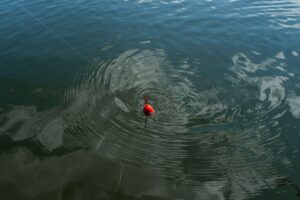 Some of the easier game fish to catch in the freshwaters of East Texas are black and white crappie, redfish, sunfish, and striped bass. Two harder but still popular game fish to catch are speckled trout and hybrid bass.
Some of the easier game fish to catch in the freshwaters of East Texas are black and white crappie, redfish, sunfish, and striped bass. Two harder but still popular game fish to catch are speckled trout and hybrid bass.
The beautiful scenery of East Texas provides residents with charming spots to take part in freshwater fishing whenever they want. Some of these friendly places to visit with the family are Lake Fork in Rains County, Cooper Lake State Park in Delta/ Hopkins County, Lake Bellwood in Tyler, Toledo Bend Reservoir between Texas and Louisiana, Faulkner Park in Tyler Texas, and Lake Conroe in Montgomery County.
Depending on your location in East Texas you should research what lake best accommodates your needs. Some of these needs are the type of fish you’re looking to catch and the convenience of the area. Thoughts like these are key to keep in mind when searching for waters to fish around Texas.
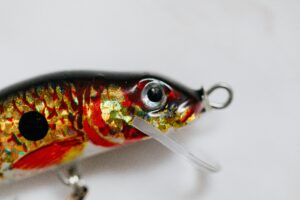 Before planning your weekend fishing trip you need to double-check your supplies and ensure you have everything you need. Some instruments you will want to pick up for your outing are extra hooks, extra line, bobbers, sinkers, needle-nose pliers, plastic worms, a lure or two, and don’t forget a little first aid kit just in case.
Before planning your weekend fishing trip you need to double-check your supplies and ensure you have everything you need. Some instruments you will want to pick up for your outing are extra hooks, extra line, bobbers, sinkers, needle-nose pliers, plastic worms, a lure or two, and don’t forget a little first aid kit just in case.
In an article titled 10 Steps to Start Fishing Scoutlife.org states ¨All you need is a cane, fiberglass, or graphite pole, available at a bait shop or discount store for about 10 bucks. Also buy a small spool of monofilament fishing line (6- or 8-pound test for freshwater, 10- or 12-pound test for salt water), a couple of plastic bobbers, some split shot sinkers (BB size), and some hooks (size 2 for small bait, up to size 3/0 for bigger bait). A small tackle box with divided trays and a carrying handle keeps it all organized.¨
There are also a few things to bring along with you that aren’t necessarily fishing-related. This includes sunscreen, a pair of boots, a chair, a hat to block the sun, pants, a jacket with pockets, and a towel. All of these items are just precautions, but you can bring whatever suits your personal needs.
After locating essential supplies for your fishing trip you need to make sure you’re prepared to catch one of these creatures. Basic steps when fishing include finding a good spot to fish, preparing your bait, attaching your line, tying the hook, etc.
 The first part of learning how to properly fish after you’ve acquired all your basic fishing necessities is knowing what bait to use. “You can buy minnows, nightcrawlers, redworms, and crickets at a bait shop. But it’s more fun to catch your own,” said Boy Scout hub Scoutlife.org. “Get minnows out of a nearby creek by using a dip net. Look under stream rocks for crayfish. Find redworms and crickets under logs and leaf litter,” they added.
The first part of learning how to properly fish after you’ve acquired all your basic fishing necessities is knowing what bait to use. “You can buy minnows, nightcrawlers, redworms, and crickets at a bait shop. But it’s more fun to catch your own,” said Boy Scout hub Scoutlife.org. “Get minnows out of a nearby creek by using a dip net. Look under stream rocks for crayfish. Find redworms and crickets under logs and leaf litter,” they added.
When moving to the next step the trusted website also reminds you to, ¨Cut off a length of line about a foot longer than the length of your pole. Wrap an end around the tip of your pole and tie it tight,” Scoutlife noted.
Now it’s time to tie the hook. According to Scoutlife, ¨Match a hook to your bait. (Size 3/0 for long worms, say, 1/0 for small shrimp.) Tie the hook to the opposite end of the line using a knot that won’t slip, such as the Palomar knot. Bad knots lose good fish.”
 Once you’ve completed this step you can move on to finding a good pond or lake to fish in. After you set up and finally cast your fishing rod into the waters you enter what some believe is the hardest part of fishing. The wait.
Once you’ve completed this step you can move on to finding a good pond or lake to fish in. After you set up and finally cast your fishing rod into the waters you enter what some believe is the hardest part of fishing. The wait.
This stage requires patience and quiet. You could be standing around for hours without any bites, or your luck could kick in and you just might have a few fish before your legs give out.
Once that bobber goes underwater or you feel that tug on the line you need to set the hook. By setting the hook I mean raising your rod upwards and starting to reel the line in. As you are rotating the reel handle towards yourself in order to retrieve the fish make sure to be quick and swift so that you might complete the catch.
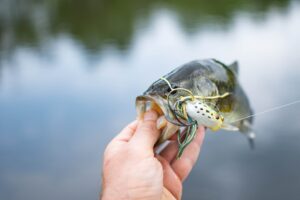 Once you have reeled in the fish you need to gently but firmly grab the fish behind the head. You will need to use your needle-nose pliers in order to remove the hook from said fish. However, once you pull that delicate fish out of the water you know that the wait was worth it.
Once you have reeled in the fish you need to gently but firmly grab the fish behind the head. You will need to use your needle-nose pliers in order to remove the hook from said fish. However, once you pull that delicate fish out of the water you know that the wait was worth it.
Handle the slimy creature with care and toss it back once you photograph your capture. If you are looking to properly store the fish in order to consume it later make sure you know the rules regarding where you are fishing. In some places, you are obligated to throw the animal back into its habitat.
Whatever you do, make sure and treat any fish or other critters you come across with care and mindfulness. After all, you are in their territory.
There are many interesting aspects to consider when searching for the right place to fish. East Texas provides its people with numerous places to hang out with family and enjoy time with friends. When considering your next fishing trip make sure to double-check freshwater fishing locations near you, so that maybe you can appreciate one of the attractive places this side of Texas has to offer.
[adning id=”33097″]
By Mattison Holland














